Export demand of textiles and apparels in 2023
In 2023, with the concentrated release of domestic demand, sales data showed impressive performance, but exports faced significant pressure against the backdrop of a global decline in manufacturing orders. The customs released the export data at the end of 2023, with some data being slightly updated and adjusted. By converting the relevant data into weight, it can roughly see the overall picture of export demand in 2023.
Synthetic filament and fabrics saw the highest growth and cotton products fell the most
Calculating based on export categories 50-63, the overall export still maintained a growth trend in 2023, with a year-on-year growth rate of 4%, but it declined compared to the previous year's 8%. Looking at specific categories, category 54, synthetic filament and fabric, showed the most prominent growth, while category 52, cotton products, experienced a relatively significant decline.
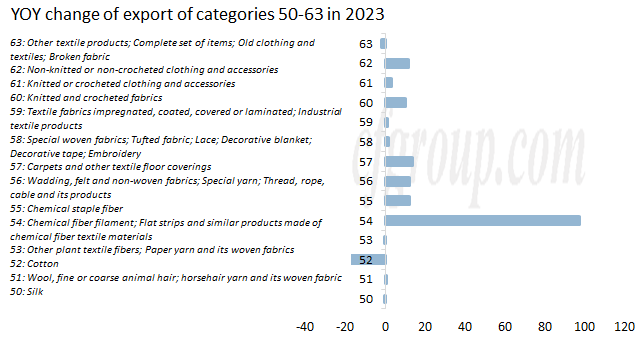
Export volume kept increasing but the growth rate decreased
To better conduct category statistics, categories 50-55 are regarded as textile yarn and fabric, categories 56-60 as textile finished products, and category 61 as clothing. The growth rates of these three segments in 2023 were 6%, 4%, and 1% respectively. This meant that exports maintained a growth trend in 2023, with a total year-on-year growth rate of 4%. However, compared to the same period of last year, there has been a noticeable decline in growth rates (Actually, only categories 51 and 54 showed an increase in growth rate in 2023).
| Category | Products |
Growth rate in 2022 |
Growth rate in 2023 |
|
Categories 50-55 |
Fiber, yarn and fabrics |
8% |
6% |
|
Categories 56-60 |
Textile finished goods |
4% |
4% |
|
Categories 61-63 |
Clothing |
12% |
1% |
|
Total |
8% |
4% |
Diversified trend on different value chains
It could be seen that the growth of fiber yarn and fabric export was relatively stable in recent years, mainly contributed by category 54 (synthetic filament and fabric) and category 55 (synthetic staple fiber and fabric), while category 52 (cotton) continued to face pressure. Textile finished products generally remained in a growth trend, with category 57 (carpets and other products) contributing relatively more, while other categories have varying increases and decreases in different years. Although the export of clothing saw some growth in 2022, mainly contributed by woven clothing, the overall exports remained basically the same as the previous year in 2023.
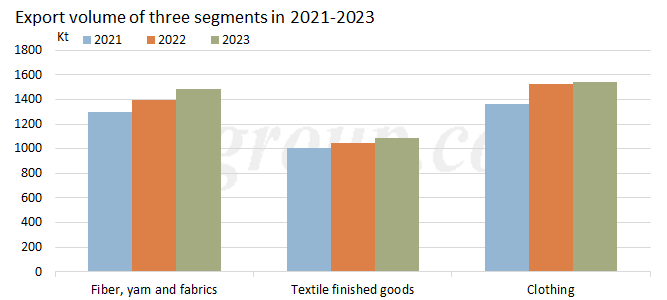
In fact, the comparison of these three segments also clearly reflected the trend of industrial chain transfer. Despite certain annual fluctuations due to factors such as the pandemic or other reasons, the export growth of clothing, which was more downstream, was still relatively limited. Textile finished products, which were more midstream, may become the next link in industrial transfer, although initially it may manifest as categories or companies with no significant cost or quality advantages. On the other hand, relatively speaking, segments like fiber yarn in the upstream sector are still leading industries and are still in a steady growth process.
Monthly exports in the same period of 2021-2023
It could be seen that for most months of 2023, exports in categories 50-55 were higher than the same period in previous years, showing a relatively noticeable growth momentum. Textile finished products and clothing both showed a relatively significant growth in the first half of 2023 (Mar-Apr) and the second half of the year (Aug-Dec), to some extent, due to the low base caused by the pandemic in 2022.
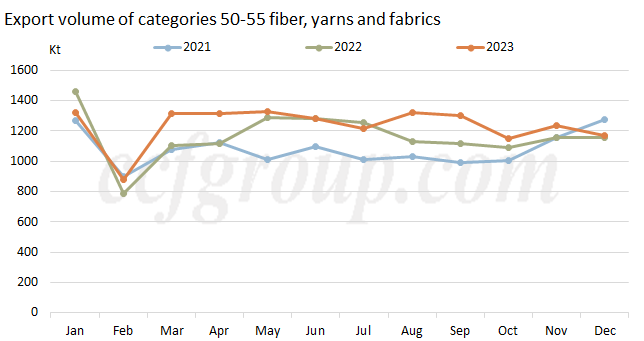
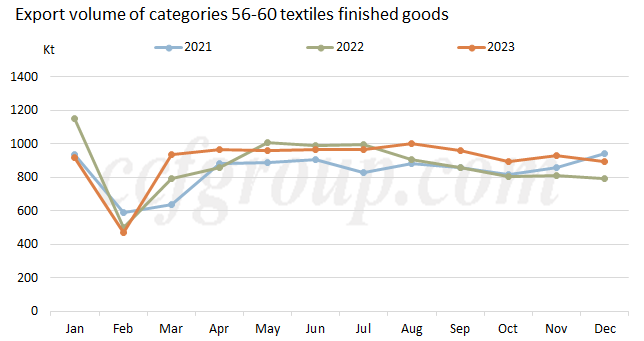
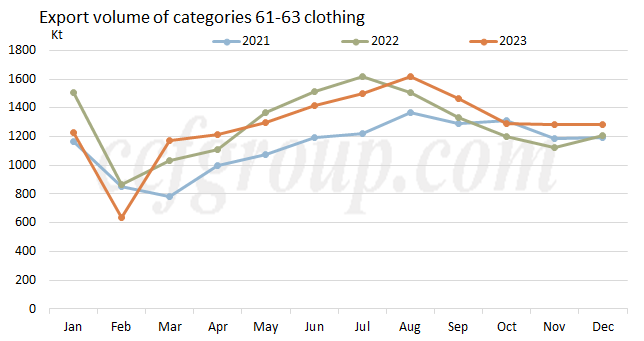
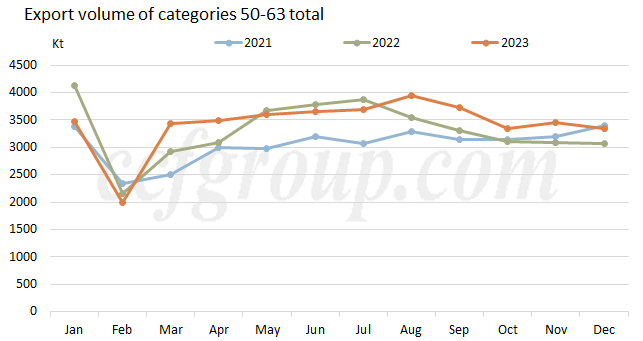
- Top keywords
- Cotton Price
- Cotton Futures Price
- Cotton Futures
- CZCE
- PTA Futures Price
- Chemical Fiber
- Polyester Prices
- Wool price
- PTA Futures
- Shengze Silk
- China
- Yarn Price
- price
- China Textile City
- Fibre Price
- Benzene Price
- Cotton
- Index
- Cotton Index
- PTA
- fabric price
- NYMEX
- Top 10
- textile industry
- Spot Cotton
- Cotton Yarn
- Polyester Price
- Futures
- PTA Price
- cotton yarn price

